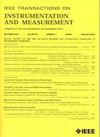A Wireless Portable System With Few Electrodes Using Thoracic Electrical Signals for Long-Term and Real-Time Hemodynamic Monitoring
IF 5.6
2区 工程技术
Q1 ENGINEERING, ELECTRICAL & ELECTRONIC
IEEE Transactions on Instrumentation and Measurement
Pub Date : 2025-04-04
DOI:10.1109/TIM.2025.3557807
引用次数: 0
Abstract
Continuous, long-term hemodynamic monitoring is crucial for enhancing the prevention and diagnosis of cardiovascular diseases (CVDs). This study introduces a system that extracts impedance cardiography (ICG), electrocardiography (ECG), and respiratory (RESP) signals from thoracic electrical signals using only four electrodes. A wireless, portable hemodynamic monitoring system has been developed, capable of acquiring multimodal physiological signals, including ICG, ECG, and photoplethysmography (PPG), among others. A signal processing approach was developed, combining the timefrequency characteristics and temporal correlations of the signals. This method includes signal denoising and locating characteristic points, enabling the real-time calculation of hemodynamic parameters such as cardiac output (CO). Furthermore, an artificial neural network is constructed based on various features extracted from the multimodal physiological signals to estimate blood pressure (BP). The device measures一种使用胸电信号进行长期实时血流动力学监测的无线便携系统
持续、长期的血流动力学监测对于加强心血管疾病(cvd)的预防和诊断至关重要。本研究介绍了一种仅使用四个电极从胸部电信号中提取阻抗心电图(ICG)、心电图(ECG)和呼吸(RESP)信号的系统。一种无线便携式血流动力学监测系统已经开发出来,能够获取多模态生理信号,包括ICG、ECG和光电体积脉搏波(PPG)等。结合信号的时频特性和时间相关性,提出了一种信号处理方法。该方法包括信号去噪和特征点定位,能够实时计算心输出量(CO)等血流动力学参数。在此基础上,基于多模态生理信号提取的各种特征,构建人工神经网络来估计血压。该设备的尺寸为85 × 48 × 18毫米,重量为76克,功耗为260兆瓦。它可以连续工作至少24小时。与商用床边血流动力学监测设备相比,测量的关键血流动力学参数的一致性相对较高。该系统在心血管疾病的诊断和慢性心血管疾病的管理方面具有广阔的应用前景。
本文章由计算机程序翻译,如有差异,请以英文原文为准。
求助全文
约1分钟内获得全文
求助全文
来源期刊

IEEE Transactions on Instrumentation and Measurement
工程技术-工程:电子与电气
CiteScore
9.00
自引率
23.20%
发文量
1294
审稿时长
3.9 months
期刊介绍:
Papers are sought that address innovative solutions to the development and use of electrical and electronic instruments and equipment to measure, monitor and/or record physical phenomena for the purpose of advancing measurement science, methods, functionality and applications. The scope of these papers may encompass: (1) theory, methodology, and practice of measurement; (2) design, development and evaluation of instrumentation and measurement systems and components used in generating, acquiring, conditioning and processing signals; (3) analysis, representation, display, and preservation of the information obtained from a set of measurements; and (4) scientific and technical support to establishment and maintenance of technical standards in the field of Instrumentation and Measurement.
 求助内容:
求助内容: 应助结果提醒方式:
应助结果提醒方式:


